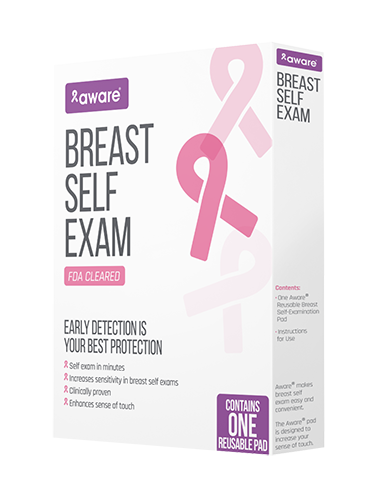

Breast Cancer Statistics*
Breast cancer is the most common cancer among women and the second most common overall. There were about 2.3 million new cases in 2020, representing 11.7% of all cancer cases. It is the 5th leading cause of cancer mortality worldwide, with 685,000 deaths. Among women, breast cancer accounts for 1 in 4 cancer cases and for 1 in 6 cancer deaths, ranking first for incidence in the vast majority of countries.
Men can develop breast cancer, too, although its incidence is low. About 1 out of every 100 breast cancers diagnosed in the United States is found in a man.
One out of eight women in the United States will develop breast cancer in her lifetime -- a risk that was one out of 14 in 1960. The chance of getting breast cancer goes up as a woman gets older.
What is Breast Cancer?
Breast cancer is a disease in which cells in the breast grow out of control. There are different kinds of breast cancer depending on which cells in the breast turn into cancer.
Breast cancer can begin in different parts of the breast and can spread outside the breast through blood vessels and lymph vessels. When breast cancer spreads to other parts of the body, it is said to have metastasized.
What are the symptoms and the risks?
The symptoms do vary between different people and some do not have any symptoms at all. Some symptoms include:
- New lump in the breast or underarm (armpit)
- Thickening or swelling of part of the breast
- Irritation or dimpling of breast skin
- Redness or flaky skin in the nipple area or the breast
- Pulling in of the nipple or pain in the nipple area
- Nipple discharge other than breast milk, including blood
- Any change in the size or the shape of the breast
- Pain in any area of the breast
Every woman is at risk for breast cancer. This risk of developing breast cancer increases as a woman ages, if she has a family history or personal history of breast cancer, has never had children or had her first child after age 30, early onset of menstruation (before age 12), late menopause (after age 55), exposure to radiation, diet high in fat, being overweight. However, over 70 percent of cases occur in women who have no identifiable risk factors.
Breast cancer cannot yet be prevented but staying healthy throughout the life, getting regular exercises and keeping a healthy weight can lower the risk.
If detected early, breast cancer can often be treated effectively. Currently, 62 percent of breast cancers are discovered at an early, "localized" stage, and five-year survival after treatment for early-stage breast cancer is 96 percent.
What is Breast Cancer Screening?
The woman´s breast is checked for cancer before any signs or symptoms occur. Breast cancer screening cannot prevent breast cancer, it helps to detect it early, when it´s easier to treat.
A comprehensive breast-screening program consists of three major components:
- Breast self-examination or also called Breast Self-Awareness
- Regular clinical breast exams by your doctor
- Ultrasound and mammograms
A woman becoming familiar with her breasts in order to identify breast abnormalities or changes, and to inform her doctor of any changes that may need further evaluation.
Performed by a health care provider who uses his or her hands to feel lumps or other changes in the breasts.
A mammogram is an X-ray of the breast and the most effective method of early detection. Having regular mammograms can lower the risk of dying from breast cancer.
Some general guidelines for when to begin a screening mammography:
- Women with an average risk of breast cancer should begin mammograms at age 40 and have them every two years. Professional groups differ on their recommendations when is the right age to start. However, these groups agree that women can choose to be screened starting at age 40
- Women with a high risk of breast cancer may benefit by beginning screening mammograms before age 40. Talk to your doctor about evaluating your individual risk of breast cancer.
Screening mammograms can detect breast abnormalities early in women in their 40s. Findings from a large study in Sweden of more than 1 million women in their 40s who received screening mammograms showed a decrease in breast cancer deaths by 29 percent. And it's important to remember that most women who get breast cancer have no family history or other known risk factors for the disease.
Screening mammography is not a perfect exam. But it is the best available tool to detect cancer early, which can lead to better treatment options.
If you're concerned about screening mammograms, talk to your doctor and learn what's right for you based on your individual risks.
*Sources:
CA CANCER J CLIN 2021;71:209–249
https://www.cdc.gov/cancer/breast/basic_info/what-is-breast-cancer.htm (accessed 20 Aug 2021)
https://www.mayoclinic.org/tests-procedures/mammogram/about/pac-20384806 (accessed 20 Aug 2021)

Order Aware®
Order Aware® today Risk Free! Your satisfaction is
unconditionally guaranteed or Biomerica will refund
your money in full! Any questions? Call 1-800-854-3002.

